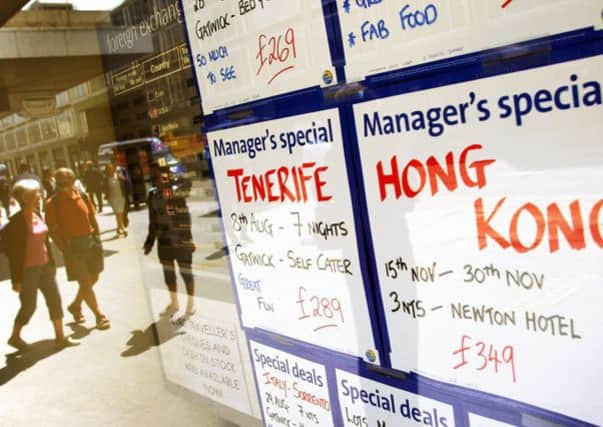Comment: Thomas Cook stabilising but not flying


The 5 per cent decline in underlying losses to £53 million in the last three months of 2014 reflects gross margin pressure from lower average selling prices, a measure of the continuing tough holidays market.
The cost-cutting under former Thomas Cook boss Harriet Green, who quit abruptly last November after just two years in the job, has continued under her successor, with a further £29m taken out in the quarter giving a current total of £429m.
Advertisement
Hide AdAdvertisement
Hide AdBut that is something of a pinprick with total group debt still hovering around £1.3 billion. Thomas Cook is likely to therefore remain a cost-cutting story in City terms for some time yet, with production and distribution of holiday packages the main areas to be targeted.
Like companies in many industries, Thomas Cook is placing a lot of hope on the cost efficiencies from getting more customers doing a lot of the work themselves by booking holidays online. It is trumpeted by corporates as convenience for customers, but it also helps the bottom line. Think of self-service supermarket checkouts, self-submitted household energy usage, bank branch closures, airline bookings.
Fankhauser, who was chief operating officer at Thomas Cook for 13 years before taking over the helm from Green, said attaining “digital excellence” was a core strategy.
Bookings on the group’s website were up 24 per cent in December, and 10 per cent over the quarter. The new boss has been cut a bit of slack for the way he turned around the UK business, which is now one of the better-performing parts of the business.
But the near-6 per cent slide in the shares yesterday – they slumped almost 20 per cent the day Green’s exit was announced – shows the market realises there are no quick fixes for a company that became bloated on low margins in the years before consumer conditions worsened.
Heineken faces up to continuing pressures
Volatility in emerging markets and deflation are set to restrict growth at Heineken this year, the Dutch brewing giant said yesterday as it reported resilient full-year profits.
They are negative factors that, to one extent or another, have hit most drinks companies in the past 18 months or so. The volatility in those emerging markets is particularly unhelpful as Heineken and its peers have sought in recent years to target them as beer consumption has slowed in the developed markets of the west.
To its credit, Heineken, which owns the British operations of former Scottish & Newcastle Breweries, is responding on the front foot, targeting higher commercial investments across its regions of operation and slightly boosting the marketing budget.
Advertisement
Hide AdAdvertisement
Hide AdThe company, which has seemed to be on a perpetual efficiency drive over several years, also says it will continue to drive cost-cutting in the business to offset the tougher markets.
It is a common picture in the industry. Most of the major brewing consolidation seems already done. The macro-economic backdrop is not dire, but not particularly helpful either.
What is left is for Heineken and the others to continually take costs out of the back office while they hope for emerging markets to get back on an even keel again.